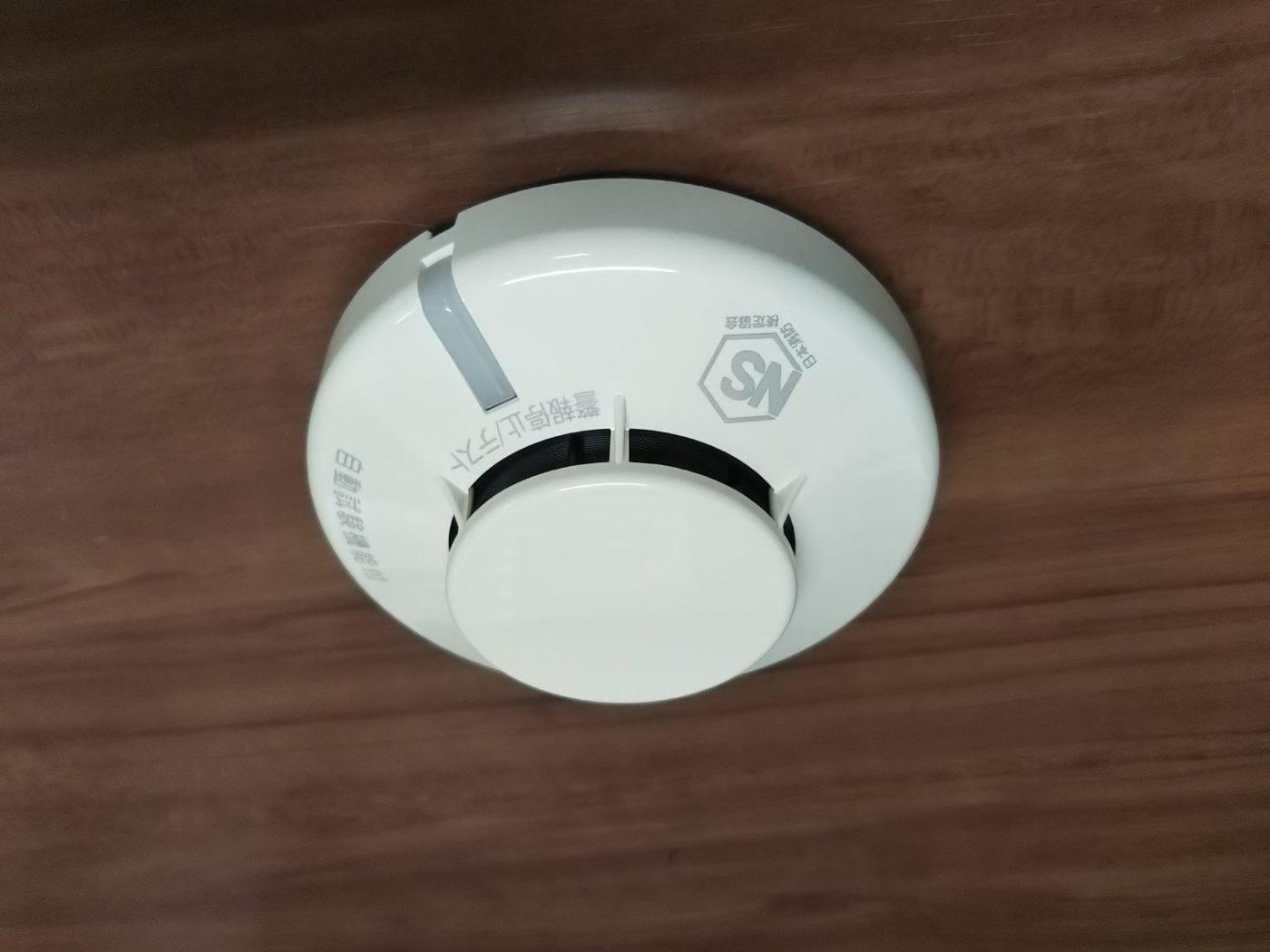🔔 Troubleshooting Fire and Smoke Alarms in Your Home

Fire and smoke alarms (住宅用火災警報器 / jūtaku-yō kasai keihōki) are required by law in Japan.
If your alarm starts beeping, flashing, or announcing a warning, it may indicate a low battery, dust buildup, or scheduled maintenance.
This guide will help you understand what the alarm means and what steps to take.
🏠 1. Types of Fire Alarms in Japan
Most homes in Okinawa use battery-powered photoelectric smoke alarms (煙式 / enshiki) or heat alarms (熱式 / netsushiki).
| Type | Location | Purpose |
|---|---|---|
|
Smoke alarm (煙式)  |
Bedrooms, hallways | Detects smoke particles |
|
Heat alarm (熱式) |
Kitchen | Detects sudden temperature rise |
Both types emit a beep or voice alert when triggered or when maintenance is needed.
💡 The Japanese voice message “ピーピー 電池を交換してください” means “Please replace the battery.”
🔋 2. If the Alarm is Beeping
🔹 Step 1: Identify the Pattern
| Beeping Pattern | Meaning | What to Do |
|---|---|---|
| Short single beep every 30–60 seconds | Low battery | Replace battery |
| Continuous loud alarm or “Kaji desu!” (火事です) | Smoke or heat detected | Check for fire / open windows |
| Intermittent beeps with red flashing light | Dust or sensor obstruction | Clean alarm with dry cloth |
| Random beeps even after cleaning | Faulty sensor | Contact maintenance |
⚠️ Do not remove or disable the alarm, it is required by law for fire safety.
🧹 3. Cleaning the Alarm Sensor
If the alarm beeps occasionally but there’s no smoke or heat:
Turn off the beeping by pressing the test/stop button (停止ボタン) once.
Gently wipe the sensor cover with a dry or slightly damp cloth.
Avoid using sprays or chemicals, this may damage the sensor.
💡 Dust and humidity in Okinawa can trigger false alarms, cleaning every few months helps prevent this.
🔋 4. How to Replace the Battery

Most alarms in Japanese homes use lithium batteries (リチウム電池) that last around 10 years.
If your alarm starts beeping every 30–60 seconds, the battery is likely low.
🔹 Step 1: Remove the Alarm
Hold the alarm body firmly.
Turn it counterclockwise to detach from the mounting plate.
🔹 Step 2: Disconnect and Replace Battery
Unplug the connector and remove the old battery.
Insert the new lithium battery and reconnect the plug.
Press and hold the test button for one second, a short beep means installation is correct.
🔹 Step 3: Reattach the Alarm
Place the alarm back on the plate.
Turn clockwise until it locks in place.
You may also refer to the illustrative guide here.
🔋 Need a replacement battery?
Saki Corporation can deliver one to your property for a fee. Submit your maintenance request form.
📅 5. Yearly Fire Alarm Maintenance
Japanese law requires regular inspections of residential fire alarms.
At Saki Corporation, we coordinate yearly scheduled maintenance with tenants in advance.
🔹 What to Expect:
Certified contractor will visit for a 5–10 minute check. *Sometimes depending on the content of the maintenance time length can defer.
-
The inspection includes:
Testing alarm response
Cleaning dust and verifying light/sound function
Confirming battery condition
🔹 Tenant Preparation:
Be present during the scheduled time if possible.
Clear access under the alarm (remove furniture or obstacles).
⚠️ If you cannot be home during the scheduled inspection, please inform our office in advance to reschedule.
🧯 6. If the Alarm Continues to Beep After Replacing Battery
If you replaced the battery and the alarm still beeps or flashes:
Check that the battery connector is securely plugged in.
Make sure the alarm is tightly fixed to its base.
Press the test/stop button again for a few seconds.
If it continues, the alarm unit itself may need replacement.
Submit your maintenance request form immediately.
Comments
0 comments
Please sign in to leave a comment.